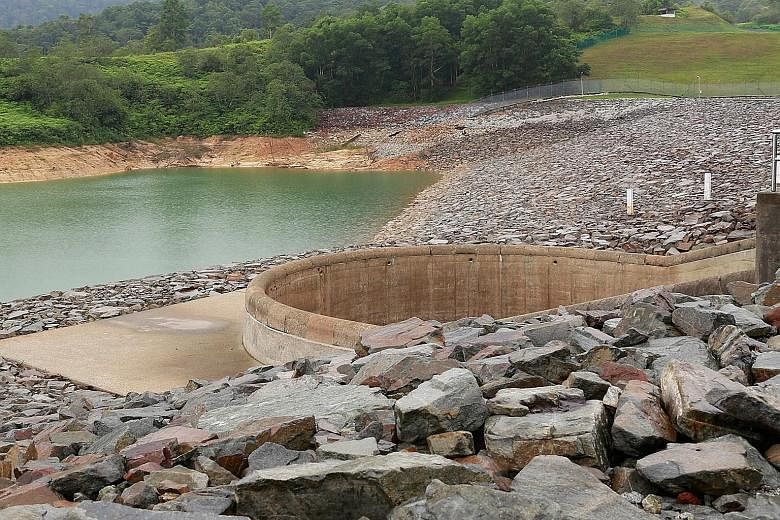Singapore's reservoirs may be quite full but that is because national water agency PUB has been ramping up its water production from Newater and desalination to almost full capacity, said Minister for the Environment and Water Resources Vivian Balakrishnan.
In fact, Singapore's rainfall, which is the main source of water for reservoirs, in the first half of this year was 25 per cent lower than average, due to drier- than-usual weather.
Yesterday, Dr Balakrishnan said Singapore's water supply from Malaysia has been affected by recent dry weather.
If the dry weather continues, water restrictions may have to kick in although the Government is not about to implement water rationing. "This means that PUB will say certain things are not permissible, for instance, unnecessary watering of plants and landscaping with potable water," he said, adding that the use of drinkable water for vehicle washing and to clean up floors might also be restricted.
Dr Cecilia Tortajada, a senior research fellow from the Institute of Water Policy at the Lee Kuan Yew School of Public Policy, said that while the situation may be worrying, it is not alarming.

"Singapore has been aware for several years of the challenges associated with climate change either within Singapore or in the catchment area of the Johor River... Infrastructural projects are being planned and will be implemented, which is the right decision," said Dr Tortajada. "A main challenge, however, will be to make water use much more efficient in Singapore, making use of pricing and non-pricing mechanisms."
Singapore's agreement to obtain water from Malaysia ends in 2061 and plans are already afoot to ensure that the country can meet up to 80 per cent of its water needs through treated seawater and Newater by 2060.
By next year, the Malaysian government will build a barrage across the Johor River to better secure Malaysia's and Singapore's supply of water from the river.
By then, Singapore would have completed building another Newater plant - its fifth. Another seawater treatment plant to be completed by 2017 will be able to produce up to 130 million gallons of water a day from seawater, up from the current maximum of 100 million gallons a day.
The plants will ensure that Singapore can meet up to about 70 per cent of its water needs using treated seawater and Newater, which are not affected by the weather, unlike water from the Johor River and captured rainwater.
During the event, Dr Balakrishnan also urged Singaporeans to be mindful of their water usage.
"We have to conserve water with the dry weather... Fortunately we are in a secure position because of the investments and insurance policies we have bought for Singapore but do not take the climate and weather for granted," he said.








